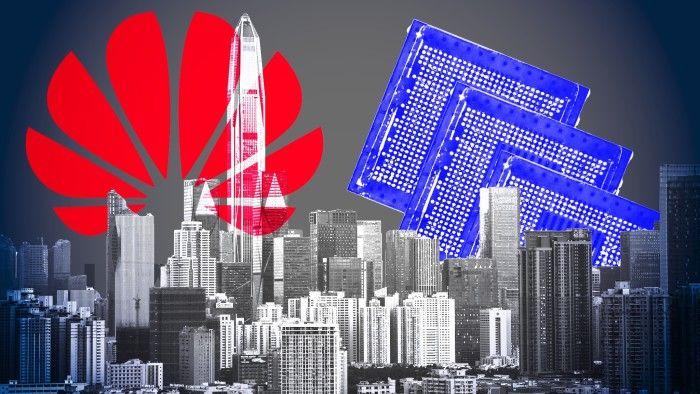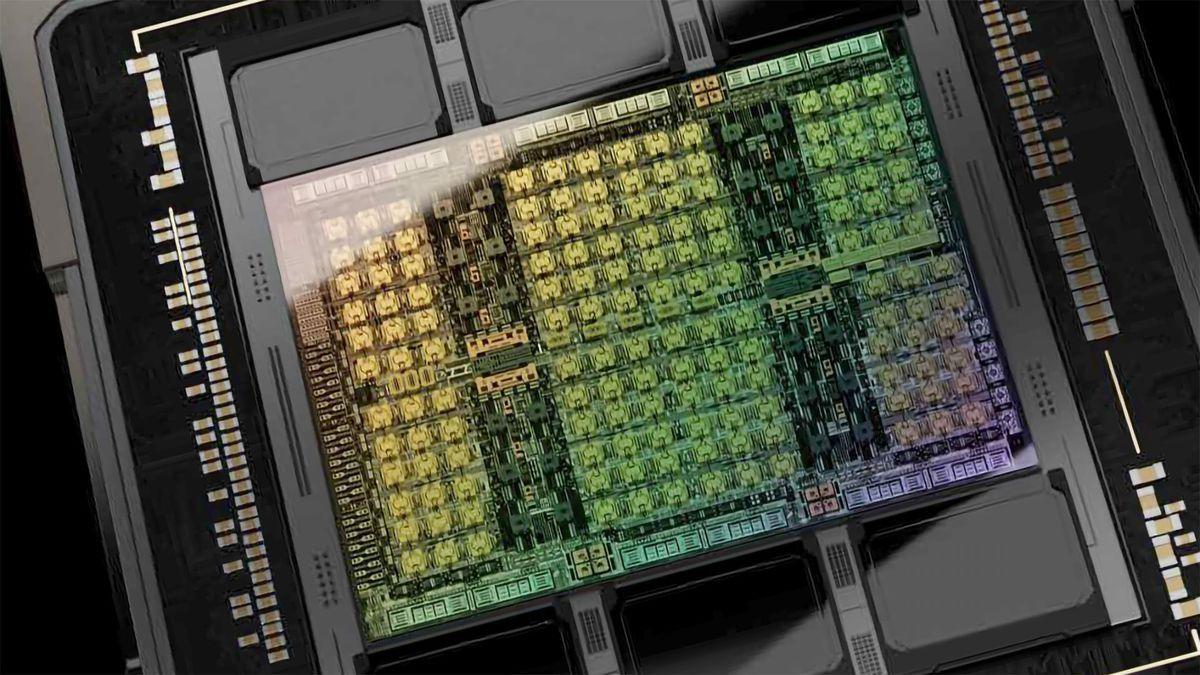Huawei Unveils $1.4 Billion Chip R&D Center in Shanghai Amid AI Race
5 Sources
5 Sources
[1]
Huawei Completes $1.4 Billion Chip R&D Centre in Shanghai
Despite U.S. trade restrictions, Huawei has developed Kirin 9000s chip, featuring 7-nanometer processing technology. Huawei Technologies has recently completed the construction of a $1.4 billion research and development (R&D) center in Shanghai, a significant move in the ongoing technological rivalry between China and the United States. This new facility, named the Huawei Lianqiu Lake R&D Center, is located in the Qingpu district of west Shanghai and spans 1.6 million square meters. It is designed to advance Huawei's capabilities in critical areas such as 5G, cloud computing, and AI. The centre also is expected to house around 30,000 employees focused on chip technology, wireless networks, and the IOT. Huawei is facing difficulties in scaling up the production of its Ascend 910B AI chip due to reliance on refurbished chip fabrication machinery, highlighting the complexities of the semiconductor industry under geopolitical pressures. The Chinese tech giant has been under stringent U.S. trade restrictions since 2019, which have severely limited its access to advanced semiconductor technologies. These sanctions were further tightened in May 2024, with the revocation of special licenses for U.S. chip manufacturers like Intel and Qualcomm to supply Huawei. Despite these challenges, Huawei has made significant progress, notably with the development of its Kirin 9000s chip, which features 7-nanometer processing technology.
[2]
Huawei sets up $1.4B R&D center in Shanghai as AI, chip race heats up
Huawei Technologies has almost completed the construction of a chip research and development center in Shanghai, a move which could advance China's technological ambitions amid U.S. export restrictions. The hub -- located in Jinze, a town in Shanghai's Qingpu district -- has been named Lianqiu Lake R&D Centre by the Chinese tech giant, and comes at a total investment of over 10B yuan (about $1.4B), according to a news release on the municipal government's website. The site will be Huawei's largest research center worldwide and features seven distinct architectural clusters, including a plaza town, urban blocks, hilltop settlements, a forest town, college campuses, urban axis and a water town. The areas are interconnected by small trains. The park's bridge projects, such as the Moon Bridge, Rainbow Bridge and Arch Bridge, are in the final stages of completion, according to the announcement. The R&D center, which is expected to officially start operations this year, integrates offices, research and development, incubation and production services. In the future the site will become a core node in Huawei's global R&D network, attracting top talent, nurturing cutting-edge technologies and helping the company to achieve breakthroughs in key technological areas such as 5G, cloud computing and artificial intelligence, or AI, as per the news release. The hub can house around 30,000 people, according to a report from Bloomberg News. The facility will pursue breakthroughs in semiconductors for devices, wireless networks and the Internet of Things, the report added, citing a state media report in January. The Chinese company once was in the race with Apple (AAPL) and Samsung (OTCPK:SSNLF) to be the world's biggest handset maker until U.S. restrictions, starting in 2019, began to curb its access to chip manufacturing tools needed for producing its most advanced models. However, in August 2023 Huawei surprised many by quietly launching its new flagship smartphone, Mate 60 Pro. The chip inside the phone ignited concerns in the U.S. and raised questions about how it was possible, without the company being able to access critical technologies. The phone also prompted an evaluation by the U.S. to learn the details of the chip inside, which was the most advanced semiconductor China had manufactured. In April, the Chinese tech giant launched its Pura 70 series, which features the Kirin 9010 chip. This is a follow-up to the Kirin 9000s made by Semiconductor Manufacturing International (OTCQX:SIUIF) for the Mate 60 Pro. Earlier this month, it was reported that the U.S. government revoked eight licenses so far in 2024 which enabled some companies to supply products to Huawei, Reuters reported citing a document. In recent months, the U.S. Commerce Department's officials, reportedly, pressured American chip equipment manufacturers and their suppliers to stop selling to Huawei and to the Chinese company which makes Huawei chips. Industry participants are could scrutinize Huawei's next flagship phone, Mate 70, which is expected to launch later this year, for any indications that China has made further strides in chip development. Apple's (AAPL) smartphone market share in China had been facing tough competition from Chinese rivals such as Huawei, Honor and others. The iPhone shipments in China began growing in April and May, after having seen revival in March. The U.S. tech giant's phones had seen a 37% slump in the first two months of 2024. More on tech stocks Apple Stock: Time To Sell (Downgrade) Apple Is Getting Ahead Of Itself How Apple Is Capitalizing On Its Balance Sheet To Drive AI Growth British regulators to look into digital wallets of Big Tech Global smartphone shipments rose 6.5% in Q2, says IDC
[3]
Huawei builds $1.4 billion chip center amid U.S. sanctions
One of China's main competitors in the chip war has built a research and development center for chips in Shanghai as it faces pressure from U.S. sanctions aimed at curbing its advanced technology efforts. The Huawei LianqiuLakeR&D Center is expected to start operations this year with a total investment cost of over 10 billion yuan, or $1.4 billion, according to a release from the Qingpu district government. The release added that the research and development center will help the Chinese tech giant "achieve greater breakthroughs in key technological fields such as 5G, cloud computing and artificial intelligence." In January, the state-owned Securities Times reported that the center will have nearly 30,000 personnel carrying out research and development of chips, wireless networks, and the internet. Huawei has been on the U.S. trade blacklist since 2019, and special licenses issued to U.S. chipmakers Intel and Qualcomm allowing the companies to sell to blacklisted Chinese chip firms were revoked in May. However, Huawei has experienced a resurgence in China due to its Mate 60 Pro smartphone, which is powered by a Kirin 9000s chip. The chip, which uses advanced 7-nanometer processing technology -- seen as a blow to U.S. sanctions efforts -- was made by China's top chipmaker, Semiconductor Manufacturing International Corp. (SMIC). However, Bloomberg reported in March that the companies had used technology from U.S.-based Applied Materials Inc. and Lam Research Corp. to make the chips. SMIC reportedly had possession of the U.S.-made technology before U.S. companies were barred from supplying Chinese companies with advanced chips and chipmaking equipment in October 2022. In April, U.S. Secretary of Commerce Gina Raimondo said Huawei's smartphone chip "is not nearly as good" and "years behind what we have in the United States" -- a sign that U.S. export controls are effective.
[4]
Huawei's billion-dollar Shanghai R&D complex is complete
Billed as a city in its own right, center built to advance megacorp's 5G, cloud, and AI tech Huawei's massive R&D complex in Shanghai is finally built - intended to give the US-sanction-hit Chinese tech giant a boost when it comes to competing with international rivals. Officially named the Huawei Lianqui Lake R&D Center, the Shanghai Qingpu government says the complex cost more than ¥10 billion (or around $1.4 billion) to construct. The high budget for the project was thanks to the complex's footprint of 1.6 million square meters, which the tech giant deemed necessary to include "a plaza town, urban blocks, hilltop settlements, a forest town, college campuses, urban axis [sic], and a water town." Shanghai's Qingpu district is home to more than a million people, a tiny fraction of the wider city's near-30 million population. The Qingpu local government says the Lianqui Lake R&D Center "will become a core node in Huawei's global R&D network, attracting top talent, nurturing cutting-edge technologies and helping Huawei achieve greater breakthroughs in key technological fields such as 5G, cloud computing and artificial intelligence, contributing to the advancement of the global technology industry." Early reports on the complex in April indicated that it would employ 30k people, who would be tasked with innovating in the aforementioned areas, as well as developing new chipmaking tools. Perhaps most important of these tools are lithography machines, the most cutting-edge of which are more or less necessary for producing chips nodes 7nm or smaller. The latest extreme ultraviolet (EUV) machines are produced solely by Dutch tech company ASML, which is legally barred from selling the machines to China. Huawei has been able to produce 7nm processors for its smartphones, but not "at scale" according to US Commerce Secretary Gina Raimondo, presumably because using older deep ultraviolet (DUV) lithography machines results in significant amounts of chip defects. While the official statement on the Huawei Lianqui Lake R&D Center doesn't mention chipmaking tools, there's strong evidence that Huawei and China really covet this technology, as Huawei employs a former ASML worker that was accused of stealing the company's trade secrets. Should Huawei fail to make much headway into its own cutting-edge chipmaking tools, it could mean China will continue to lag behind Western rivals, with one study predicting China will make just two percent of the world's advanced chips in 2024, compared to the US's 28 percent. ®
[5]
Huawei Builds Largest Research Center In Shanghai: Report - Apple (NASDAQ:AAPL), Intel (NASDAQ:INTC)
New facility targets breakthroughs in semiconductor technology. Huawei Technologies Co. is reportedly nearing the completion of a major chip research and development center in Shanghai, signaling a significant boost to China's technological ambitions despite ongoing U.S. efforts to curb its rise. The center aims to achieve breakthroughs in semiconductors for devices, wireless networks, and the Internet of Things, reported Bloomberg. This new facility, located in the Qingpu district, will be Huawei's largest research center globally, housing approximately 30,000 personnel. The expansive site spans 1.6 million square meters and includes its own road network, a small railway system, and elevated bridges, the report highlighted. The total investment for the facility is 10 billion yuan ($1.4 billion). Huawei's commitment to advancing its semiconductor capabilities comes amid persistent U.S. sanctions and export controls aimed at limiting the company's progress in the tech sector. Also Read: Chip Maker Intel Aims For $1B In Software Revenue By 2027 Last year, Huawei launched a new 5G phone featuring an advanced made-in-China 7-nanometer chip, successfully navigating U.S. restrictions. The Biden administration has intensified efforts to curb Huawei's chip advancements by imposing further restrictions and urging allies to add new limitations on China's semiconductor sector. Additionally, licenses that previously allowed Huawei to purchase some chips from Qualcomm Inc. QCOM and Intel Corp. INTC have been revoked to close any loopholes. The tech industry is closely watching the anticipated release of Huawei's next flagship smartphone, the Mate 70, later this year. The report further added that the Mate 60, its predecessor, saw strong demand from local consumers, boosting Huawei's market share at the expense of competitors such as Apple Inc. AAPL. Disclaimer: This content was partially produced with the help of AI tools and was reviewed and published by Benzinga editors. Image via Shutterstock Read Next: Intel Invests In Israeli AI Construction Startup Buildots - What's On The Cards? Market News and Data brought to you by Benzinga APIs
Share
Share
Copy Link
Huawei has completed construction of a massive $1.4 billion chip research and development center in Shanghai, signaling its commitment to advancing semiconductor technology despite US sanctions. The facility aims to boost China's AI capabilities and reduce reliance on foreign technology.

Huawei's Strategic Move in Semiconductor Development
Chinese tech giant Huawei has made a significant leap in its pursuit of semiconductor independence with the completion of a $1.4 billion chip research and development center in Shanghai
1
. This state-of-the-art facility, spanning an impressive 220,000 square meters, is set to become a cornerstone in China's efforts to advance its semiconductor technology and artificial intelligence capabilities2
.Defying US Sanctions
The establishment of this R&D center comes as a bold response to the ongoing US sanctions that have severely restricted Huawei's access to advanced chip technologies
3
. By investing heavily in domestic chip development, Huawei aims to reduce its reliance on foreign technology and strengthen China's position in the global semiconductor market.Focus on AI and Advanced Chip Technologies
The new facility is expected to play a crucial role in Huawei's research into cutting-edge technologies, with a particular emphasis on artificial intelligence chips
4
. This strategic focus aligns with China's national goals to become a leader in AI and semiconductor production, areas that are increasingly vital in the modern technological landscape.Related Stories
Impact on Global Tech Competition
Huawei's massive investment in chip R&D is likely to intensify the ongoing tech race between China and the United States. As the world's two largest economies compete for dominance in critical technologies, this move by Huawei could potentially shift the balance of power in the semiconductor industry
5
.Future Prospects and Challenges
While the completion of this R&D center marks a significant milestone for Huawei and China's tech sector, challenges remain. The company will need to overcome technological hurdles and navigate complex international regulations to fully realize the potential of this investment. However, if successful, this initiative could pave the way for groundbreaking advancements in AI and chip technology, potentially reshaping the global tech landscape in the years to come.
References
Summarized by
Navi
[4]
Related Stories
Recent Highlights
1
Google launches Gemini 3 Flash as default AI model, delivering speed with Pro-grade reasoning
Technology

2
OpenAI launches GPT Image 1.5 as AI image generator war with Google intensifies
Technology

3
OpenAI launches ChatGPT app store, opening doors for third-party developers to build AI-powered apps
Technology








